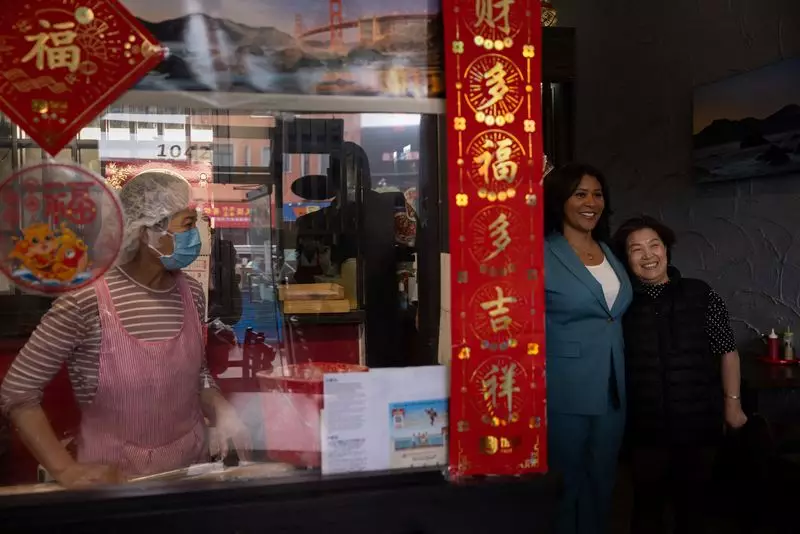San Francisco, once lauded as a beacon of progressivism and economic opportunity, is now navigating turbulent waters in its upcoming mayoral election. As early voting approaches, the city’s challenges—including escalating concerns over crime, homelessness, and housing affordability—have taken center stage. The upcoming race serves as a critical juncture, allowing voters to voice their preferences for strategies that can revive the city from a prolonged state of decline.
The COVID-19 pandemic has intensified existing issues, exposing vulnerabilities that many large cities across the United States share. San Francisco, with its high cost of living and inconsistent economic recovery, finds itself in a precarious position. Critics of the current administration argue that the city has entered a “doom loop” of homelessness and uncontrolled drug use, leading to visible decline in public spaces and a noticeable drop in downtown foot traffic.
Data-Driven Dilemmas
Statistics paint a stark picture: According to data from real estate firm JLL, San Francisco boasts the highest office vacancy rate among major U.S. cities, hovering around 32%. This troubling figure highlights the economic struggles facing the city, where empty storefronts are now a common sight. The impending mayoral election represents an opportunity for citizens to choose a leader who can effectively address these issues and catalyze a recovery.
In light of the grim statistics, recent changes in local governance signal a potential shift in political ideology. There is growing momentum for moderate, centrist candidates within the local Democratic Party, especially following recent local elections. Traditional progressive issues appear to have taken a backseat to pressing concerns like public safety and the housing crisis. Political science experts note a growing chasm between voters’ priorities and those championed by the progressive wing.
With the election shaping up as a competitive affair, incumbent Mayor London Breed faces a formidable challenge from a diverse field of 13 candidates, all vying for voter support in a ranked-choice voting format. Polls indicate that issues surrounding crime and public safety resonate more with voters than traditional progressive agendas, such as restorative justice and social equity.
A recent San Francisco Chronicle poll indicates that Mayor Breed retains a lead, boosted in part by strategic timing. A shift to even-numbered election years, instated to enhance voter turnout linked to presidential elections, has afforded the current administration additional time to improve public perception. Despite lingering challenges, a 32% year-on-year drop in crime rates—partially attributed to heightened police resources—has contributed to a recovery narrative that Mayor Breed hopes voters will embrace.
Opponents, including former interim Mayor Mark Farrell, argue that the current measures are inadequate. Farrell’s proposal to bring in a new police chief and declare a “fentanyl state of emergency” indicates a differing approach that leans heavily toward immediate action to address public safety issues.
San Francisco’s housing crisis remains a multifaceted issue affecting thousands. While the city has ambitious state-mandated goals to add new housing units, the current administration has fallen behind significantly. Just approximately 500 new housing units had received permits by mid-2023, a stark contrast to the 82,000 units required by 2031.
Mayor Breed has acknowledged the barriers to building, noting that existing policies can hinder construction efforts. Critics argue that her administration has created an environment that complicates development, making it costlier and more challenging to generate community support for new housing projects. The city’s rich history and its picturesque Victorian architecture complicate the dialogue around urban development, as many residents are reluctant to disrupt the historical landscape.
Simultaneously, the issue of homelessness remains entrenched. Despite an estimated 8,000 homeless individuals in the city—figures some advocates argue are underreported—the administration’s approach, which includes tent sweeps and increased shelter capacity, raises ethical and practical questions. Critics of the current mayor argue that such measures merely shuffle the problem rather than resolve it.
As San Francisco approaches this pivotal election, the future is uncertain. The tension between progressive ideas and the urgent demand for practical solutions may redefine how local governance operates. The electorate now stands at a crossroads, confronted with pressing issues that require immediate and effective responses. Thus, the outcome of this election will not just determine the future leadership of San Francisco; it will also shape the city’s capacity to tackle its most daunting challenges in the years to come.

